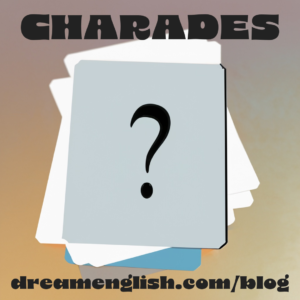Quick Game Facts:
- Name: Picture Bingo
- Recommended Ages: 4-8
- Materials Needed: Picture-based Bingo cards, flashcards with corresponding images
- Prep Time: Minimal

Introduction:
Hello, enthusiastic educators! Are you ready for a visual adventure that will boost vocabulary and observation skills? Look no further than the exciting game of “Picture Bingo”! This interactive activity replaces words with pictures to engage and captivate young minds while reinforcing language learning. So, get your Bingo cards and flashcards ready, and let’s embark on a delightful language journey with “Picture Bingo”!
Overview:
- Objective: Play Bingo using picture-based game cards and flashcards with corresponding images.
- Recommended Ages: 4-8
- Materials Needed: Picture-based Bingo cards, flashcards with corresponding images
- Prep Time: Minimal
Setting Up the Game:
Setting up “Picture Bingo” is easy and sets the stage for a fun-filled language adventure! Prepare a set of picture-based Bingo cards with colorful illustrations representing various vocabulary words. Ensure the pictures are age-appropriate and aligned with the language proficiency of the young learners. Create corresponding flashcards with the same set of images to use for calling out during the game. You can make great free printable Bingo game cards at ToolsForEducators.com
Playing Picture Bingo:
Get ready to explore the world of “Picture Bingo” and sharpen your observation skills! Here’s how it works: Distribute the Bingo cards to the players, ensuring each player has a unique card. Shuffle the flashcards and keep them facedown in a stack. As the game leader, reveal the top flashcard and show it to the players. Players will search for the corresponding picture on their Bingo card and cover it with a marker, such as a small token or a sticker. Encourage players to use the vocabulary associated with the pictures as they mark off the squares. Continue revealing flashcards one by one and let the players mark off the corresponding pictures until a player completes a full row, column, or diagonal line and shouts “Bingo!”
Making It Educational:
While enjoying the visual adventure, let’s maximize the educational value of “Picture Bingo”! After each round, take a moment to discuss the vocabulary represented by the pictures. Encourage players to describe the images, share their associations with the vocabulary, and use the words in simple sentences. Use the opportunity to reinforce pronunciation, expand vocabulary, and foster language development. You can also introduce additional flashcards with new images to keep the game engaging and provide opportunities for further learning.
Tips and Variations:
- Ensure the pictures on the Bingo cards are clear, colorful, and easily recognizable by the young learners.
- Create themed sets of Bingo cards based on specific topics or units being taught, reinforcing content knowledge and vocabulary acquisition.
- Incorporate additional language skills by asking players to name or describe the pictures when they cover them on their Bingo cards.
- Collaborative option: Instead of individual Bingo cards, create a group Bingo card where players work together to cover the pictures. This promotes teamwork and cooperation among young learners.
- Hide the flashcard image from the students and say the word only. Make the students find the image on their Bingo card by hearing the word only. If they can not find it, you can help the students by showing the card.
Benefits of Picture Bingo:
“Picture Bingo” offers a range of benefits for young language learners. It enhances vocabulary recognition and retention, develops visual observation skills, fosters language comprehension, encourages social interaction, and provides a joyful way to engage with language. The game boosts confidence, stimulates creativity, and creates a positive and immersive language learning environment.
Conclusion:
Dear young language learners, “Picture Bingo” is an exciting game that combines colorful illustrations and language learning for an unforgettable adventure. As you mark off the pictures on your Bingo cards and shout “Bingo!” with joy, your vocabulary and observation skills will flourish. So, gather your Bingo cards, explore the vivid images, and let’s embark on a delightful language journey with “Picture Bingo”! Stay tuned for more inspiring game ideas in our upcoming blog posts. Happy playing and learning!

